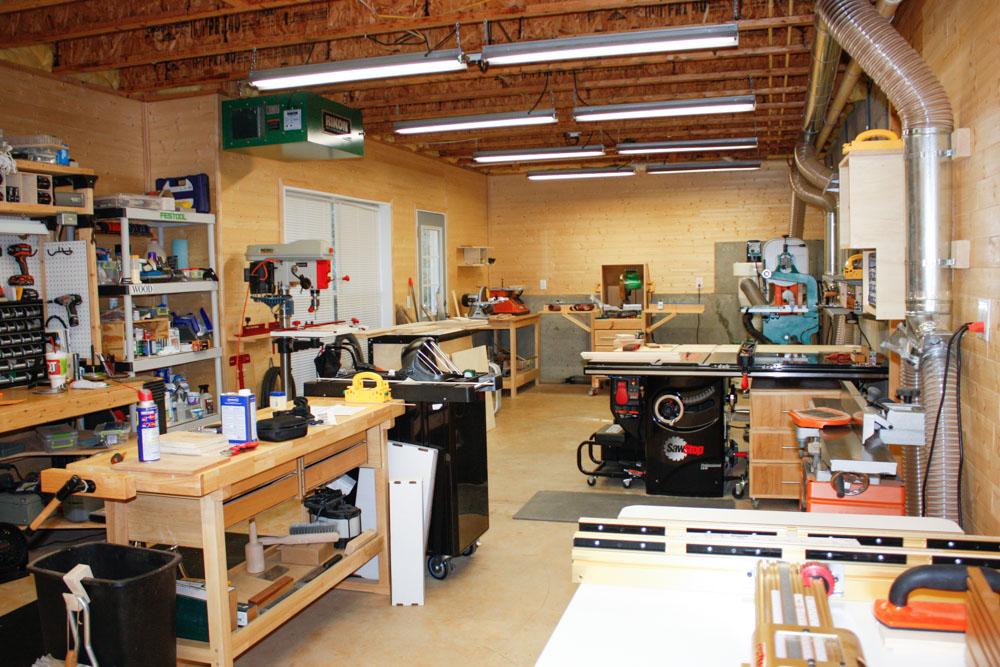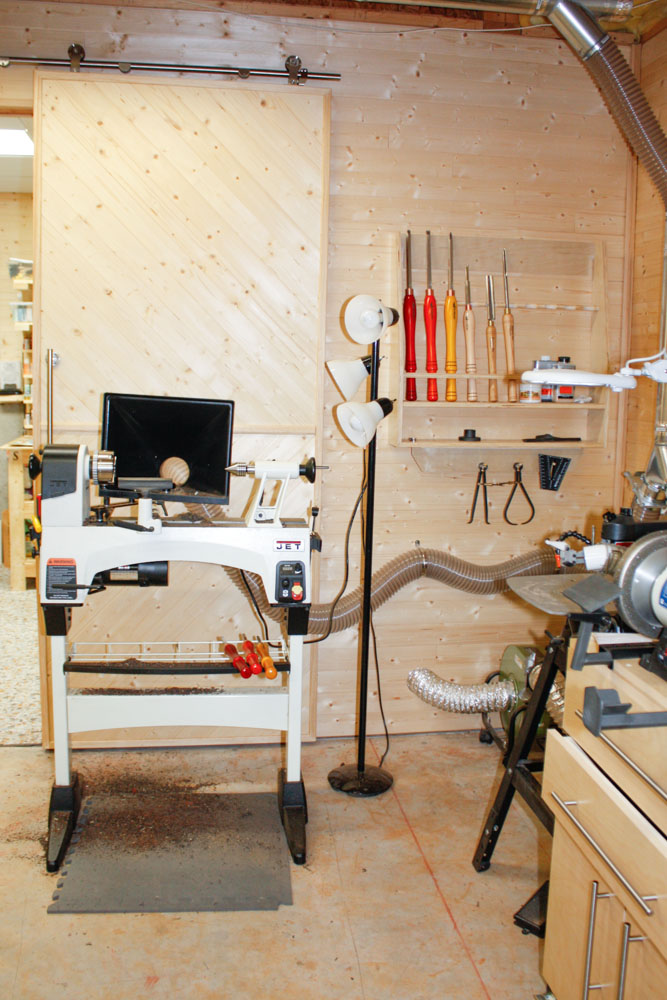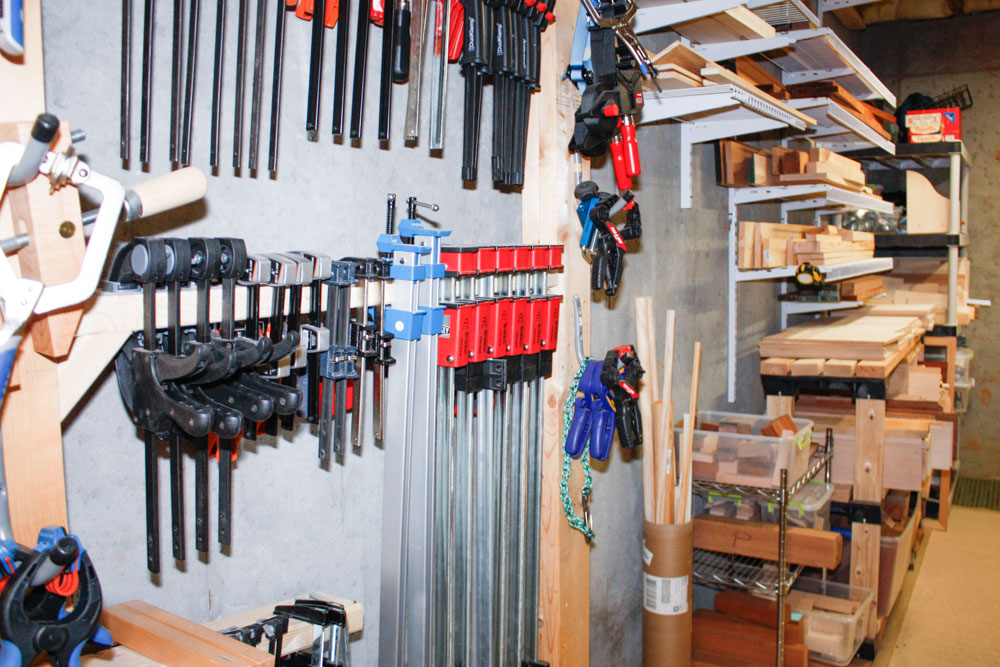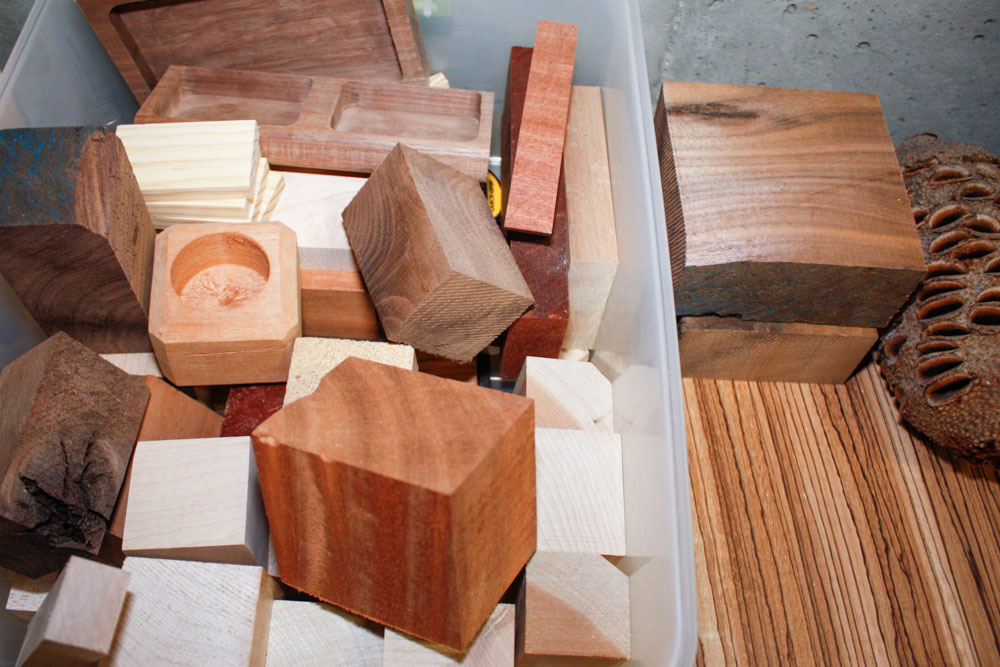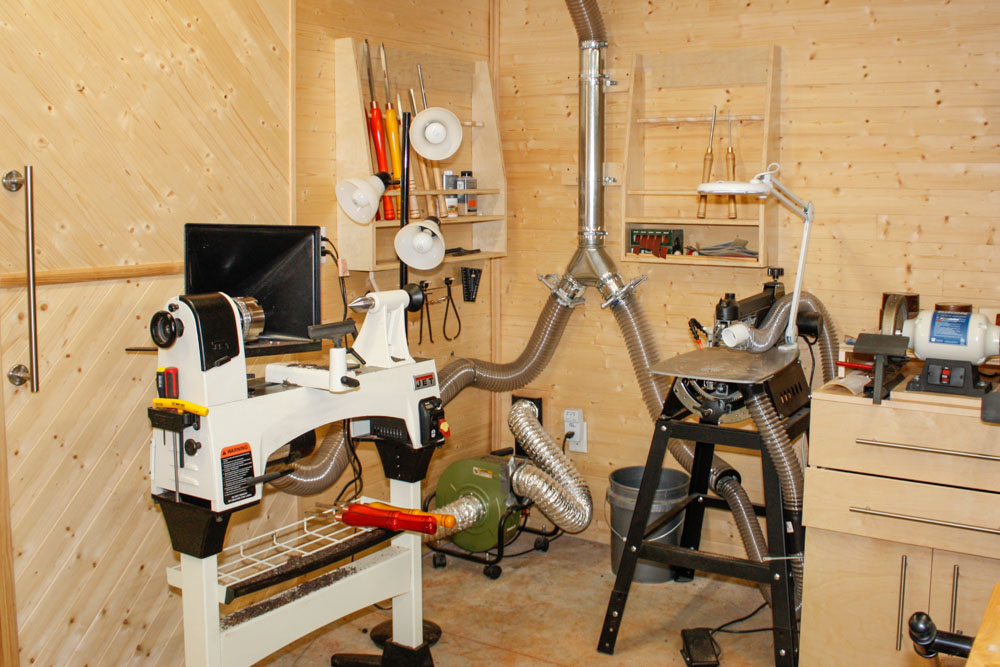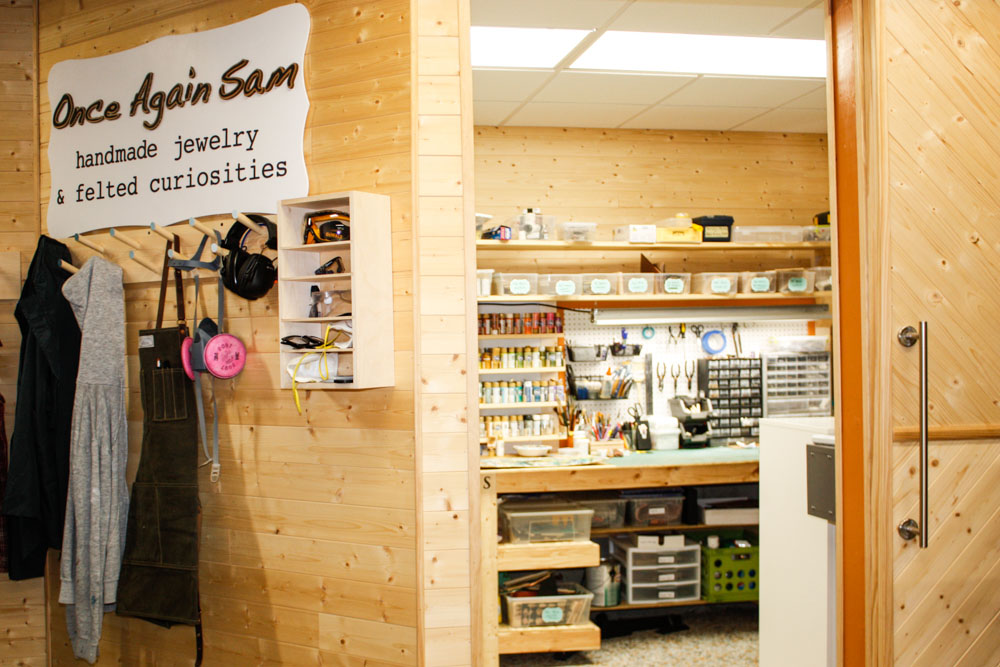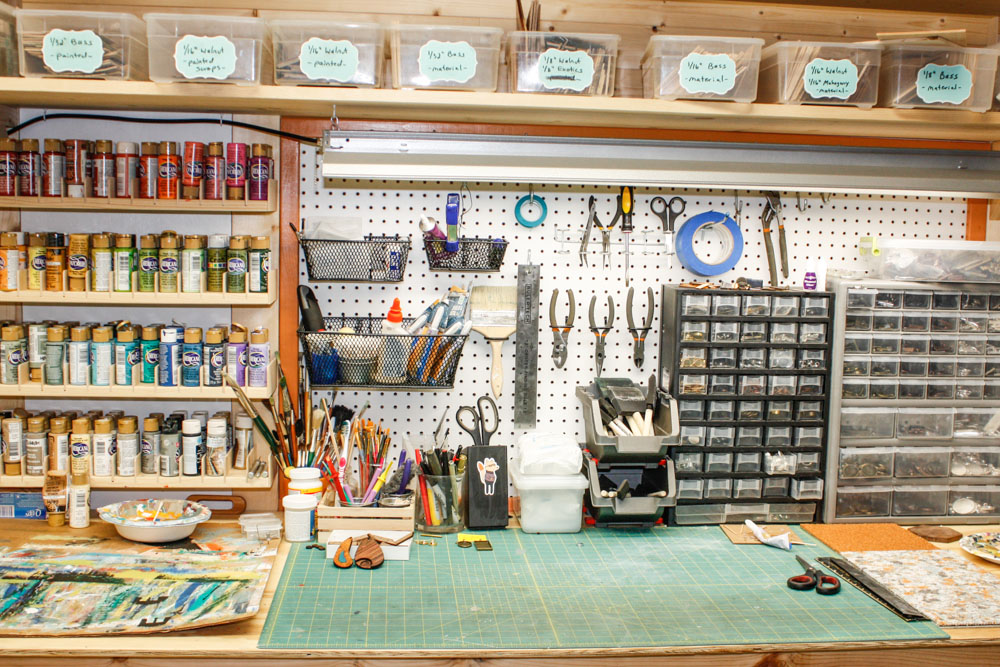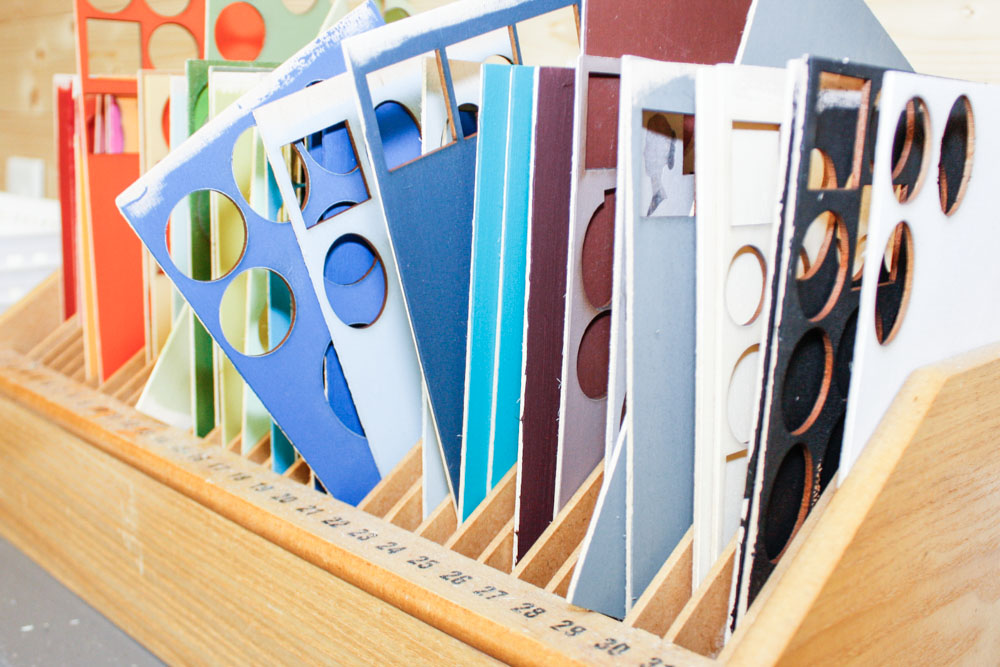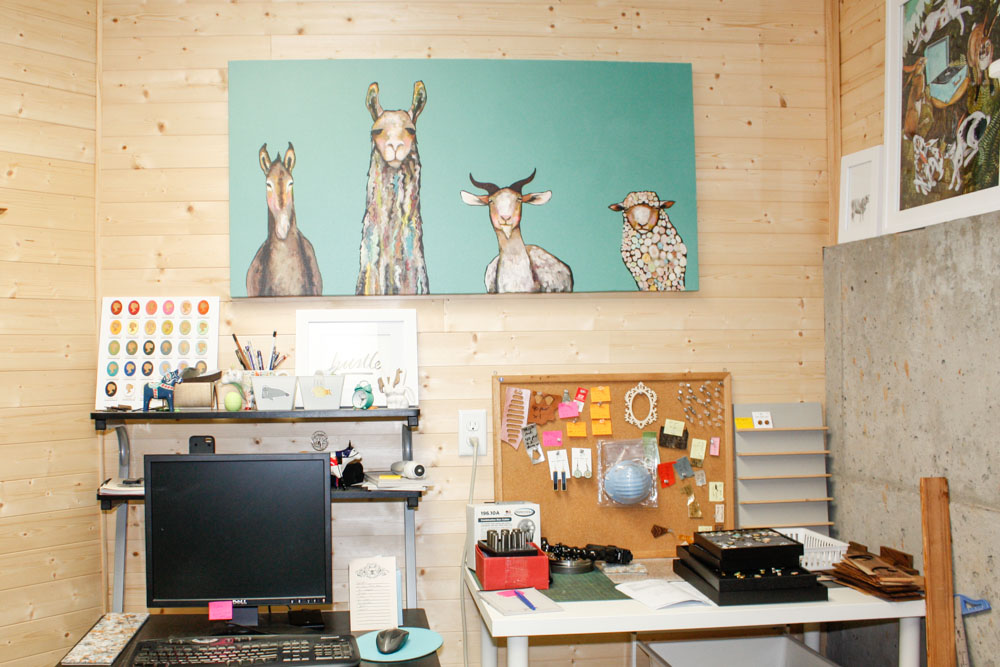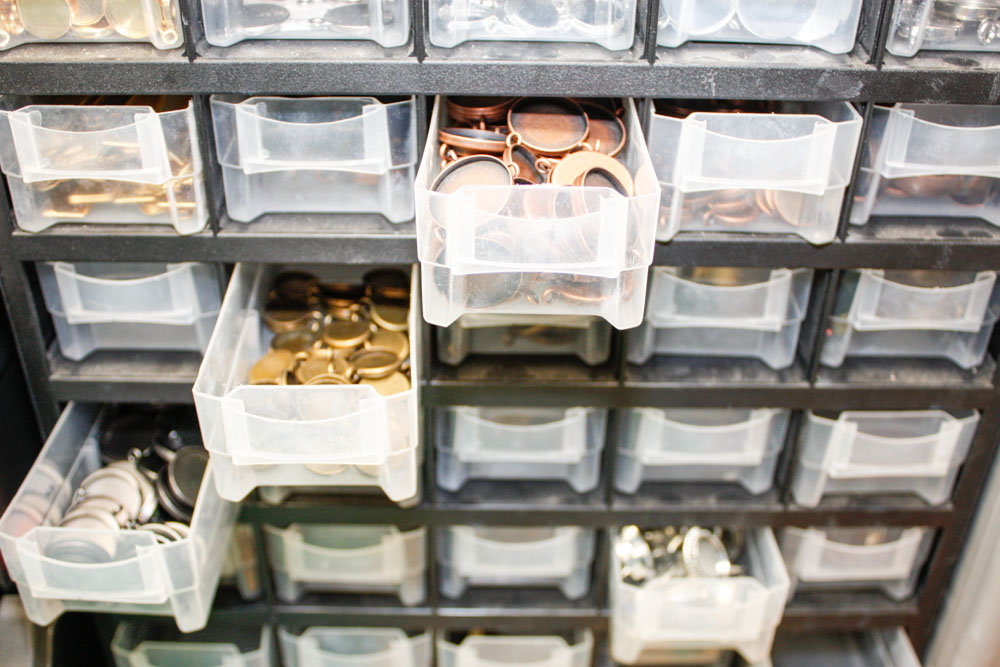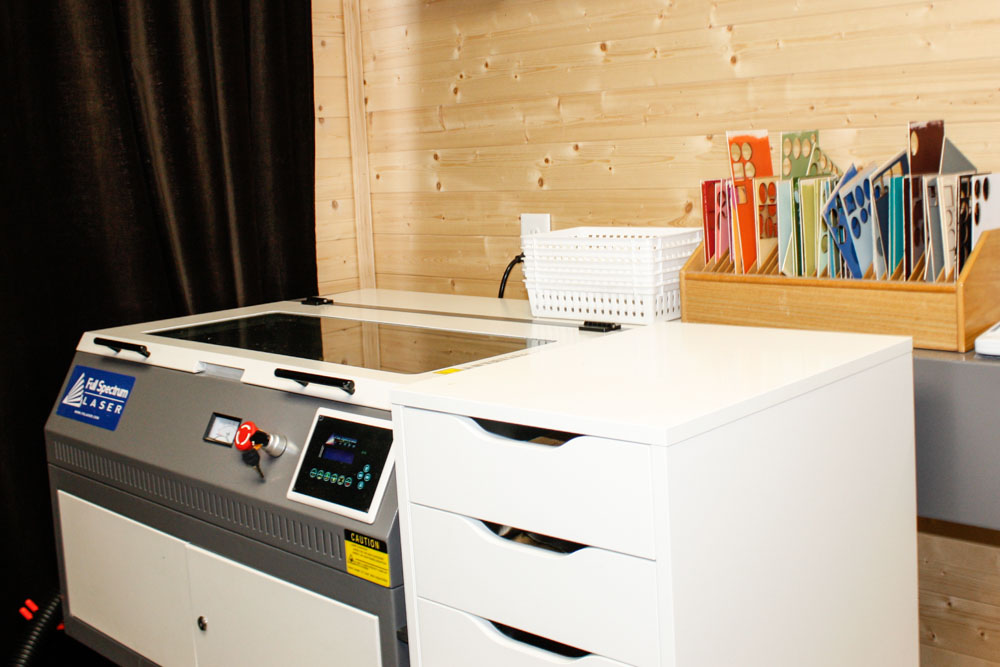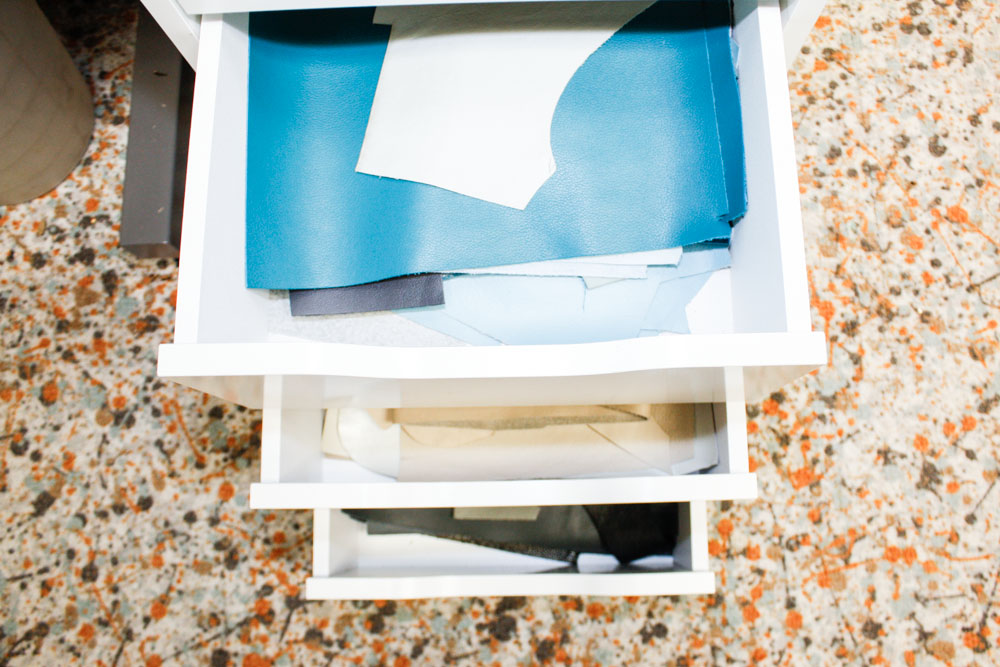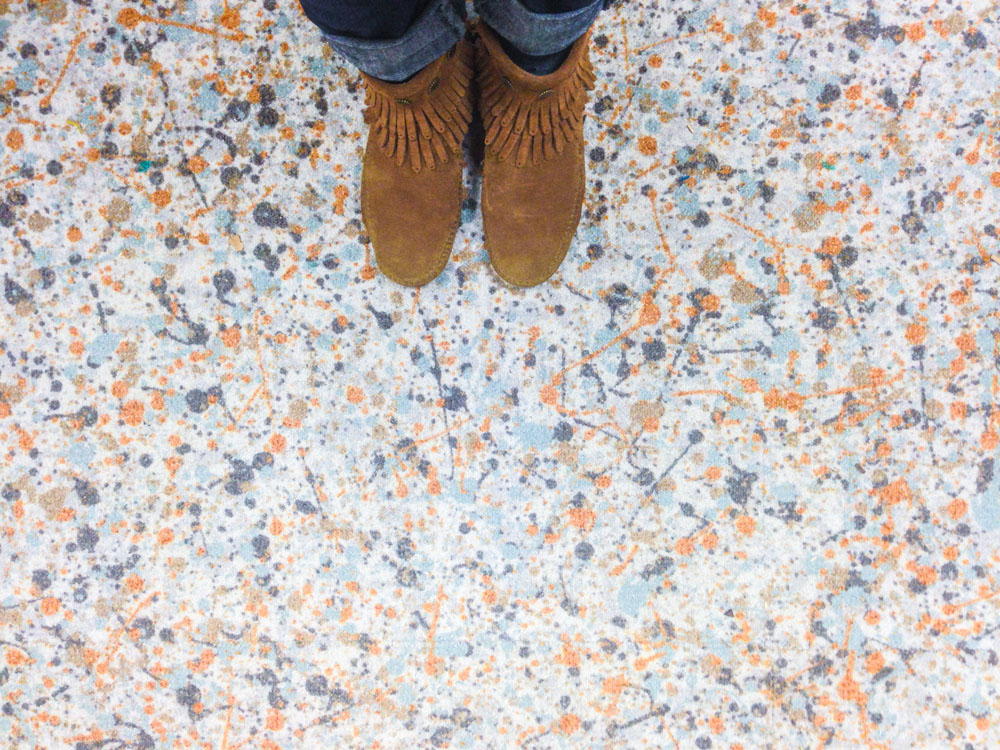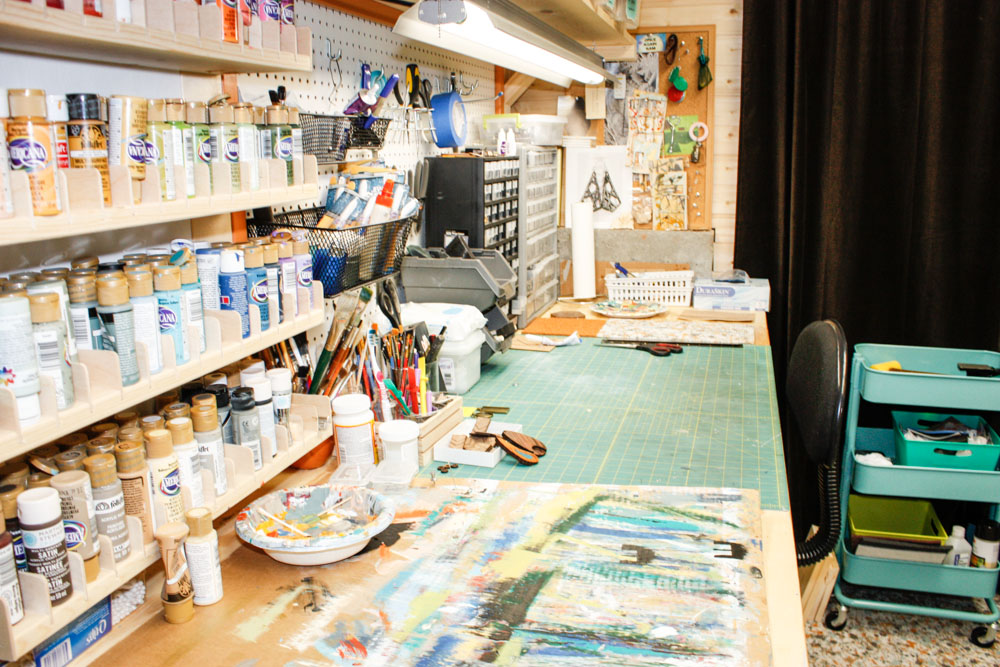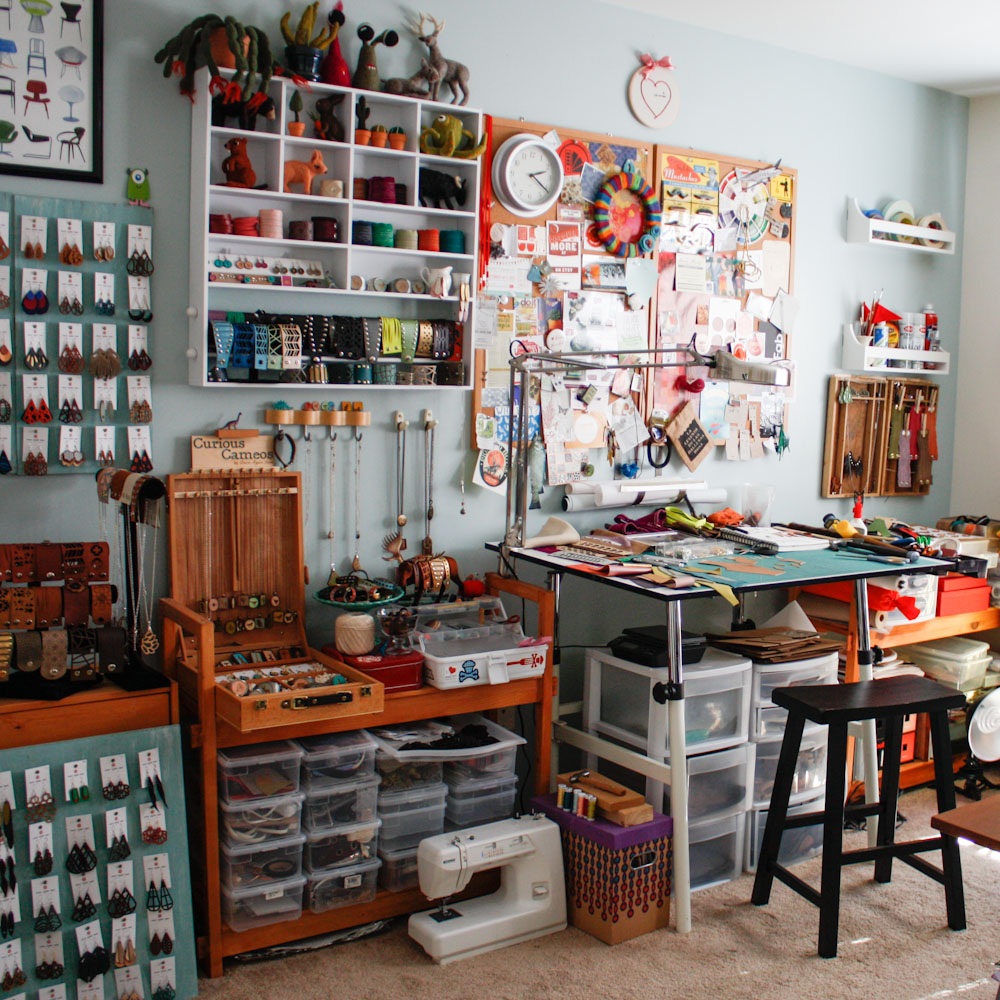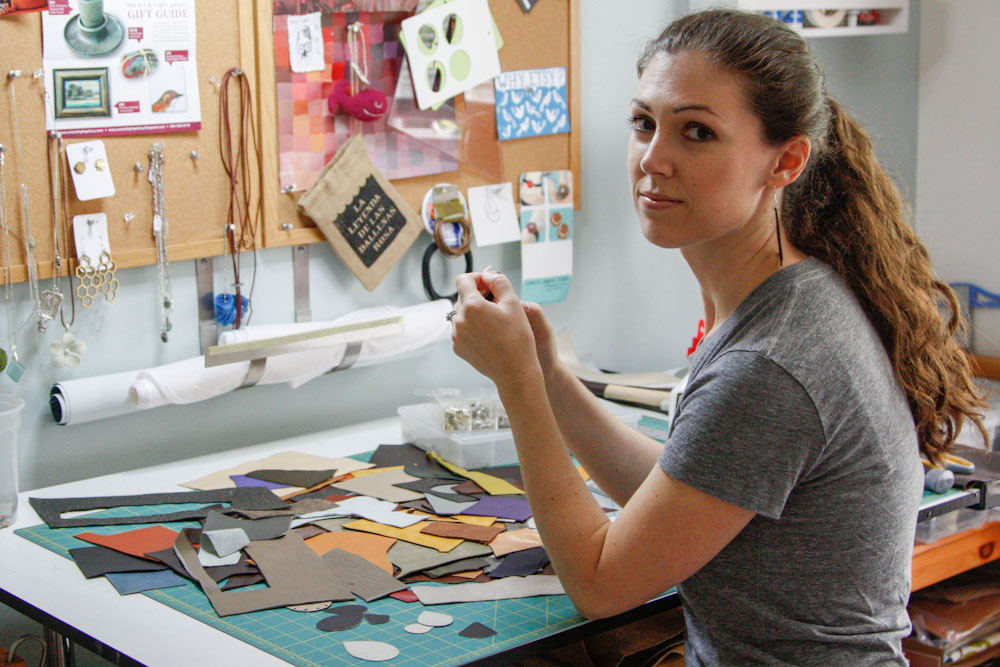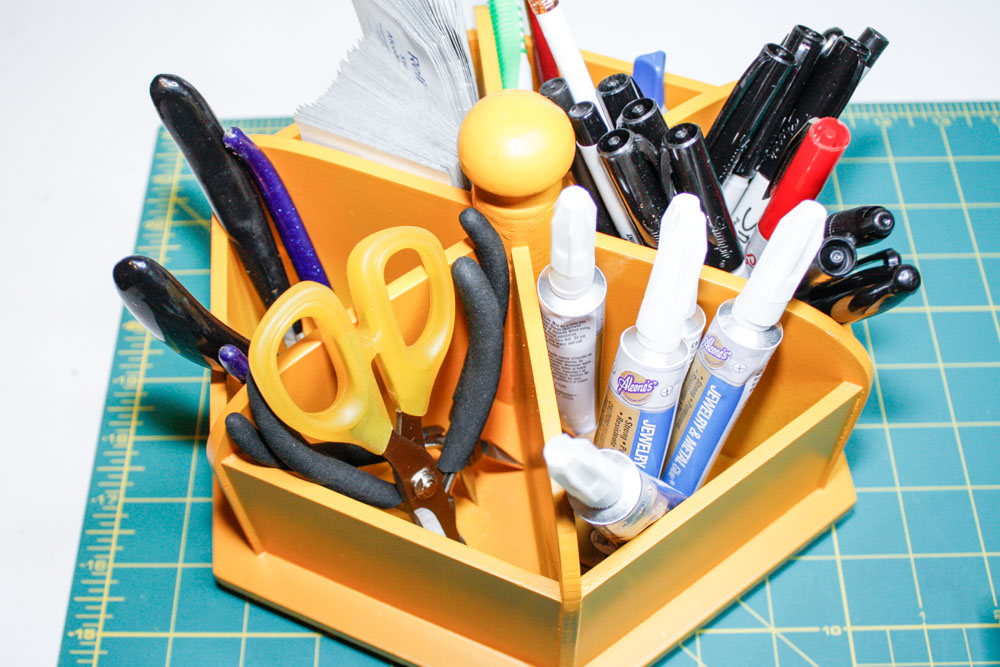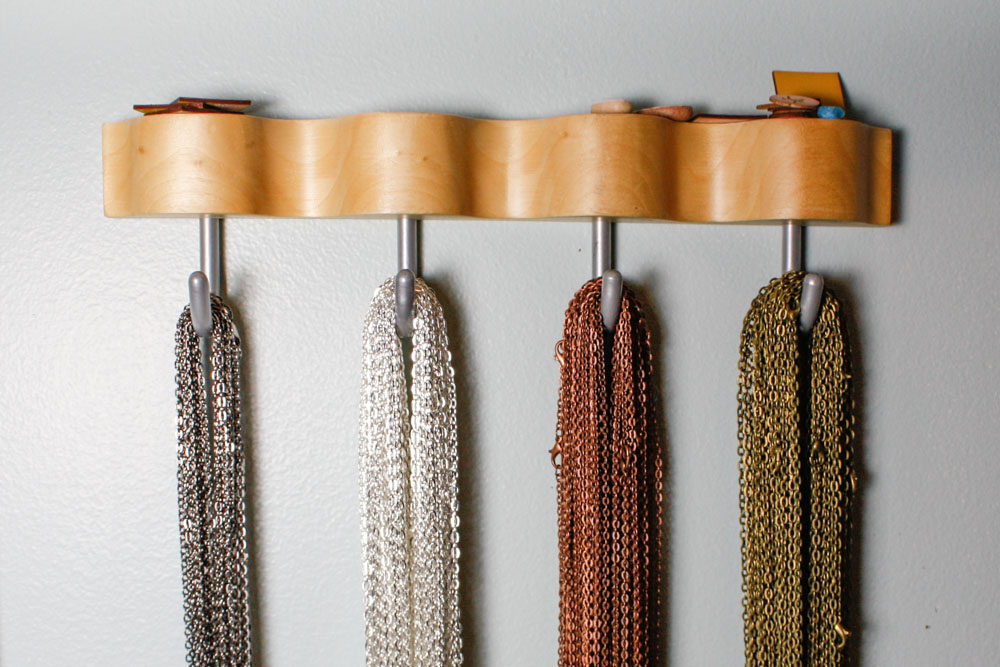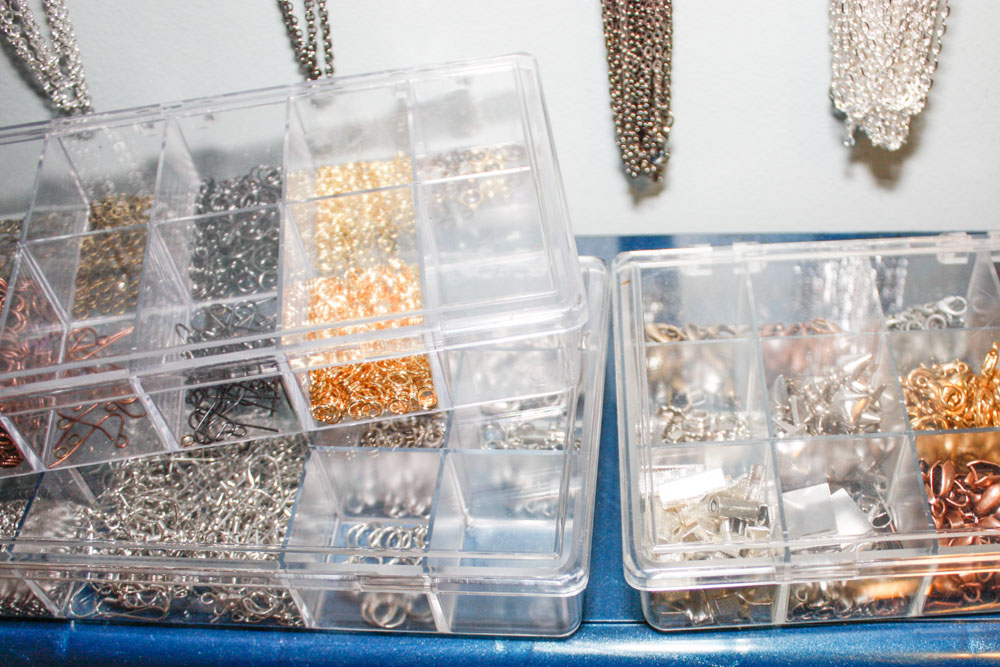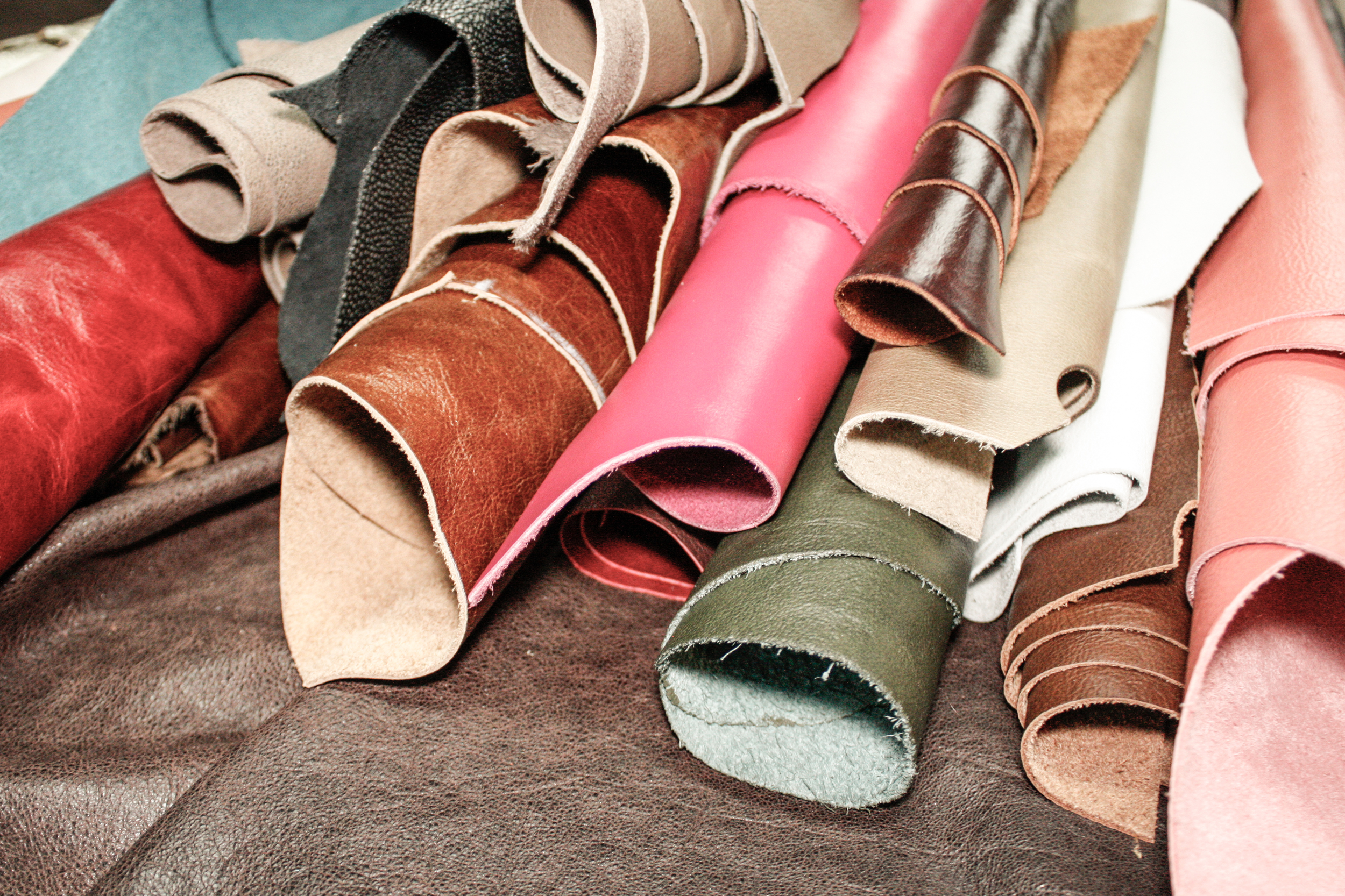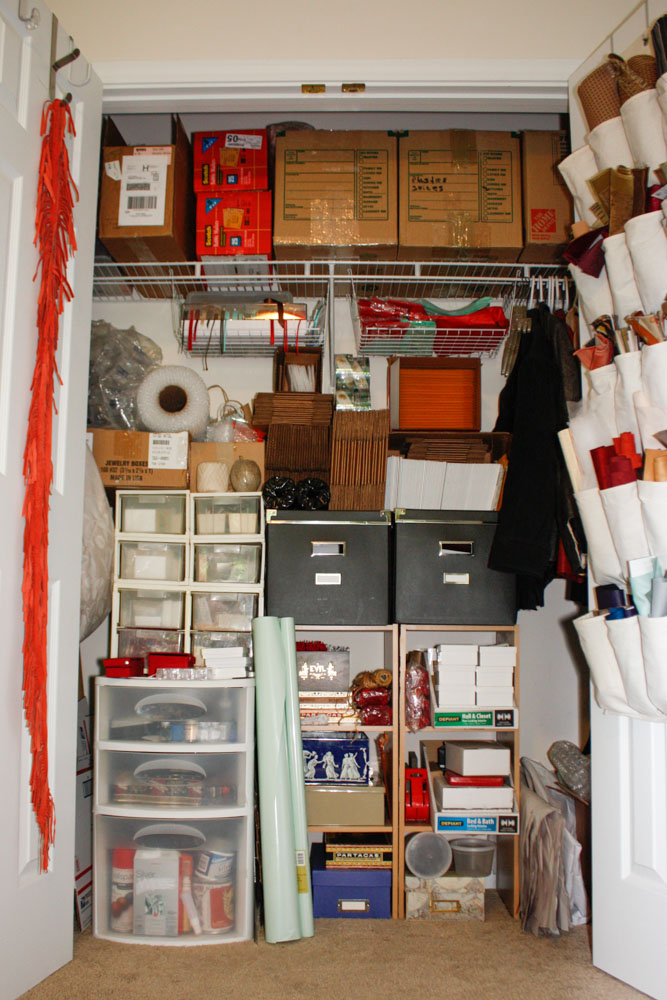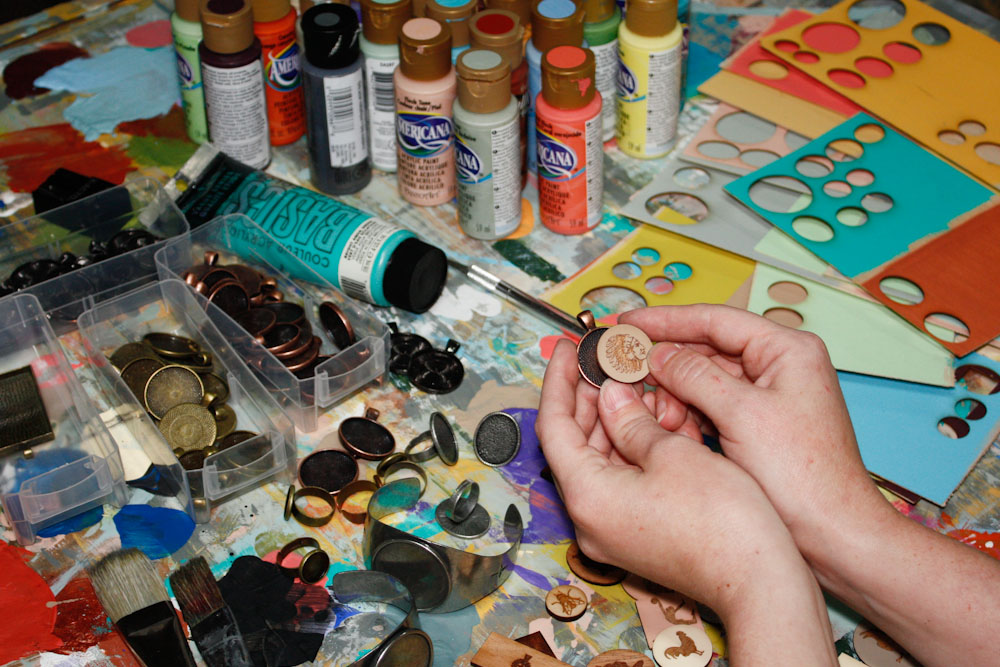Tour My Workspace(s)
My work is a huge part of my life, and my home is where I work. The spaces in which I create are linked to my ability to get work done, be inspired to try new things, and ultimately make a living. Working from home is ideal for me, because I can bounce around from making leather earrings, to needle felting, to laser cutting wooden pendants, to photographing new products, all without having to go anywhere. A lot can be accomplished in just one day!
Today, I’m inviting you on a virtual tour of my many workspaces. Each room is home to a different part of my process, and is the birthplace of a variety of handmade items. When you make a living making things, it can change your whole lifestyle, and your home ends up becoming more than just a place to live.
Come on in, welcome to my home!
The Workshop: this is the first stop on the tour because it’s where my husband / operations manager and I have spent the most time renovating and improving lately (lighting, ductwork, wood paneling, etc.). The unfinished basement is about 900 square feet and is where a lot of production work occurs. All the things that make big messes (like the lathe, sanders, saws, laser cutter, etc.) live down here.
The Laser Room: In an 8x10 side room, a room that was once used as a children’s play area when we hosted a Bible study / small group a few years ago, is now the the “laser room”. I recently upgraded my 40 watt hobby laser cutter to a humongous and awesomely powerful 90 watt pro model. It’s pretty friggin’ cool! We could barely move this new machine into the house, it cost as much as a used car, and requires serious ventilation, but it was well worth it. My jewelry designs (done in Illustrator or AutoCad) are intricate, but the laser can handle it. I could never dream of doing these cuts successfully by hand, so by adding this high tech tool, I’m able to remake my designs over and over, which allows me to do large orders and keep my prices reasonable. Having a machine like this changed my whole business model several years ago when I took the plunge and bought the original laser. In this room, I also keep some leather, wood, and tons of supplies. We’ve got a small tabletop CNC router on order so that will be a welcome addition very soon.
* Favorite things about this space: the workbench with “paint store” that my handy husband built for me, and my way-cool splatter paint carpet that’s fun and light, but hides everything (because let’s face it, it’s not clean, and some of those paint splatters are actually paint splatters).
The Studio: From the basement workshop, walk up two flights of stairs and you’ll find my studio. This is the room where final assembly, finishing touches, photography, and packing orders occurs. All of the hand-cut leather jewelry is made here, since I still have have a number of designs that use basic hand tools rather than high tech machines. In the closet, there’s shipping supplies and about a dozen articles of clothing. Not my clothes. Clothes I got at thrift stores and intend to chop to pieces and turn into jewelry. I love to repurpose leather and will buy just about anything, as long as the color is right.
* Favorite things about this space: My “leather drawers” ;-) The leather scraps in these drawers are organized by color, and I get inspired just by looking at all the bits and pieces and all the possibilities they bring.
The Office: Go back down one flight of stairs, and you’re in the office. It’s funny, the workshop, studio, and office are all in the same exact corner of the house, so the views are identical, just at different levels. The office is shared with my husband who works from home, and is where I do all of my correspondence, Etsy shop maintenance, photo & video editing, blogging, and accounting. Since I don’t have a physical brick & mortar store, and in-person craft shows are only seasonal, I end up doing the majority of my business from this spot in the house.
* Favorite things about this space: being near my husband. We “bother” each other a lot, but it’s actually a huge blessing. There was a time back when we lived in the DC metro area when we only saw each other about 2-3 hours a day during the week. It sucked. We have a completely different lifestyle now and I wouldn’t trade it for anything. Also, his title of “Operations Manager” is 100% accurate - he keeps the biz up and running, so it’s nice having him nearby.
The Couch: Not kidding! I spend several hours a day needle felting on the couch with some sort of nature documentary, depressing indie film, or audio book going in the background. The living room may pass for fairly normal at first glance, but if you look closer (like in the bins under the couch, the basket under the end table, in that dark wicker hamper sitting discreetly in the corner), you’ll notice there’s a whole flocks’ worth of sheep’s wool all around you. I have my roving in containers organized by color, so it’s easy to find what I need. Besides (a lot of) wool fiber, there’s really not much else needed for needle felting. I have a 2” thick foam pad that sits on my lap while I felt, a variety of needles, plus a portable work light, and that’s about it.
* Favorite things about this space: being able to learn something new / think about something else unrelated to my work, while I work. My hands may be felting, but at the same time I can be learning all about the Altiplano in South America and the fascinating flamingos that call it home, or reading / listening to The Electric Michelangelo by Sarah Hall for the 50th time.
So there you have it. The spaces where everything is handmade, by me, under one roof!

